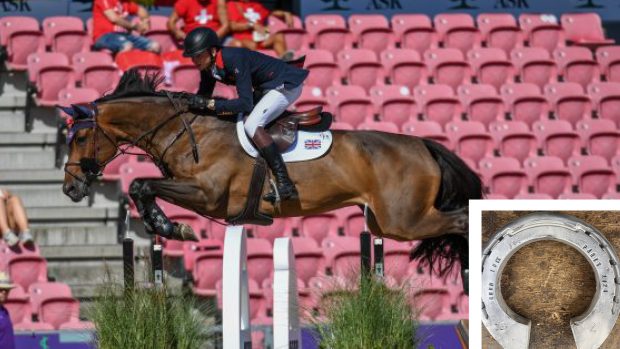Son of late showjumping legend Tim Stockdale, Joe (pictured) is making his mark in showjumping ranks and was selected to represent his country as part of the young rider Nations Cup in Austria and European young rider team in 2019. He also won the under-25 grand prix at Royal Windsor in May.
Training the stars
One of my top rides, Gunner II (Romeo), anticipates where the fences are and starts taking you to the fence before you want to go there. He’ll come around the corner and fall in on the inside, then end up coming in too tight.
He’s a very sensitive horse and picks up on my body language, feeling for the direction my body is turning so he can anticipate the direction, so I’ve had to learn to be still and central in my body so as not to give too much away to him.
When riding a course, some horses come around the corner and fall in or drift out through their shoulder. If they go out through their outside shoulder, they are then on a wider line than they should be. If they cut the corner and fall in, you end up coming to the fence tighter than you want to. This takes you off your line and alters the striding. You either then have to take a stride out or put in a short one, which increases your chance of a knocked pole.
Tackling the issue
1 First, make sure the horse is listening to your leg aids. You want to know your leg is going to be effective and the horse is going to respect it, so you can use it as a barrier and help keep him straight on the line you want. Your leg should effectively keep the horse upright in his body, so he doesn’t fall in or out but stay on the same line, curve, rhythm and ideal approach to the fence.
2. It’s important the rider remains neutral and balanced in the saddle. If you’re on a sensitive horse, as soon as you adjust your body, the horse will know where you are heading and will start to anticipate and take over. By staying as straight and central as possible, you won’t give too much away. You need to be very disciplined to stay tall and not lose your balance, keeping your weight in your heels so you don’t grip with your knees.
3. I then put up a few fences, quite small to make it easy, and practise turning fairly tightly after fences and coming back inside fences, making some quite tricky turns so the horse gets used to having to turn back on himself and take off from wherever he is. It also helps you to get your eye in and see a stride as you come around a corner and not always when on a dead-straight line. It keeps your horse’s mind busy and constantly offers new questions, so he doesn’t have time to anticipate. It is also good practice for keeping your leg on, because as soon as you take your leg off, the horse can take advantage and fall in or out.
Article continues below…
You might also be interested in:

Subscribe to Horse & Hound magazine today – and enjoy unlimited website access all year round

#SundaySchool: the showjumping ‘gym’ with Holly Smith
The international showjumper talks us through this multi-fence workout which she uses with both her younger and more experienced horses

#SundaySchool: William Whitaker on how to develop rhythm
Sharpen up your showjumping basics with this curved grid exercise
Things to consider
- It’s vital that you have the basics in place at home before you go to a competition and attempt a jump-off — this is not the place to be schooling your horse.
- Horses can fall in on turns if they struggle to hold themselves up, so that could be pain related or due to them being too weak. Know your horse, and when things don’t feel right, get him checked out.
- Horses with an inappropriate or badly fitting bit can have issues with turning, so ensure your horse is properly kitted out.
Would you like to read Horse & Hound’s independent journalism without any adverts? Join Horse & Hound Plus today and you can read all articles on HorseandHound.co.uk completely ad-free.




